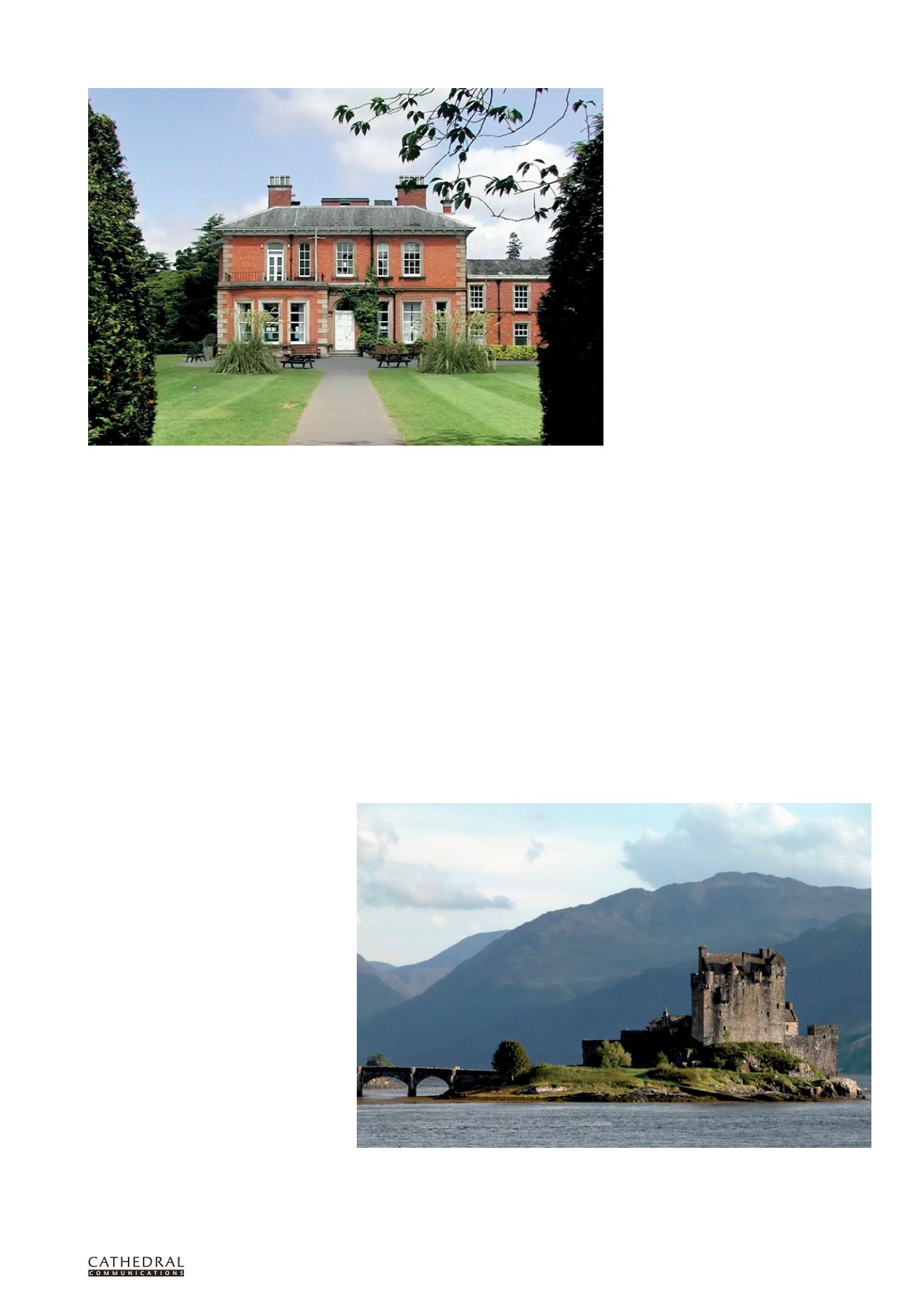
T W E N T Y F I R S T E D I T I O N
T H E B U I L D I N G C O N S E R VAT I O N D I R E C T O R Y 2 0 1 4
3 9
1
PROFESSIONAL SERVICES
to apply for a certificate of lawfulness
to obtain formal confirmation from the
local planning authority that the works
for the alteration or extension (but
not demolition) they are proposing do
not require listed building consent’.
LISTED BUILDINGS IN NORTHERN IRELAND
Responsibility for listing, scheduling and
designating lies with the Northern Ireland
Environment Agency, a government body
within Northern Ireland’s Department of
the Environment (DoE NI). The Historic
Monuments Council advises the department
on the scheduling of monuments, conservation
of monuments in state care, maritime
archaeology, industrial and defence heritage
and areas of significant archaeological interest.
Copies of the various lists can be viewed in the
Northern Ireland Monuments and Buildings
Record in Waterman House, Belfast as well as
in the offices of local authorities. The addresses
of listed and other historic buildings can be
found online on the Northern Ireland Buildings
Database, but list descriptions are only
included for more recent listings.
Unlike the rest of the UK there are four
grades of listed buildings, not three. The top
nine per cent of listed buildings are graded A
or B+. The rest are grade B1 or B2. Generally,
B1 is chosen for buildings that qualify for
listing by virtue of a relatively wide selection
of attributes, and B2 for those that qualify by
virtue of only a few. Buildings in the former
grade C, now known as ‘locally listed’, do not
enjoy statutory protection as listed buildings.
Ecclesiastical exemption
from the need
for LBC and CAC applies to ‘an ecclesiastical
building which is for the time being used for
ecclesiastical purposes or would be so used
but for the works’.
Planning Policy Statement 6: Planning,
Archaeology and the Built Heritage
(PPS6)
provides the principal source of guidance on
the protection of listed buildings under the
Planning (Northern Ireland) Order 1991 and
the Planning Act (Northern Ireland) 2011.
LBC is required for the demolition
of a listed building and for any works of
alteration or extension which would affect its
character as a building of special architectural
or historic interest. As there is ‘a general
presumption in favour of the preservation of
listed buildings’, applications for LBC must
be supported by full information to ‘justify
the proposal’ and to ‘enable assessment of
the likely impact of proposals on the special
architectural or historic interest of the
building and on its setting’.
The guidance recognises the need for
historic buildings to accommodate change
and that there is usually room for ‘some
degree of thoughtful alteration or extension’.
Policy BH8 lists the criteria that must be met
as follows:
a) ‘the essential character of the building
and its setting are retained and its features
of special interest remain intact and
unimpaired;
b) ‘the works proposed make use of
traditional and/or sympathetic building
materials and techniques which match
or are in keeping with those found on the
building; and
c) ‘the architectural details (eg doors,
gutters, windows) match or are in keeping
with the building.’
Apart from the impact on the special
architectural or historic interest of the
building, the authorities may also take
into consideration ‘the extent to which the
proposed works would bring substantial
benefits for the community, in particular by
contributing to the economic regeneration
of the area or the enhancement of its
environment (including other listed
buildings)’ (Para 6.5).
Under the Planning Act (Northern
Ireland) 2011 increased fines are now in effect
and relate to offences committed on or after
04 May 2011. In each case the maximum
fine on summary conviction is raised from
£30,000 to £100,000.
LISTED BUILDINGS IN SCOTLAND
Historic Scotland is the government
body responsible for the conservation of
the built heritage in Scotland. It advises
Scottish ministers on wide-ranging historic
building matters and has a statutory role
in determining applications affecting the
demolition of buildings which are listed or in
conservation areas, and the alteration of the
most important (Category A) listed buildings.
The Pastmap website of the Royal
Commission on the Ancient and Historic
Wilmont House, Belfast: this Grade B1 listed building was designed by the Victorian architect Thomas Jackson
c1859 and was used most recently as a residential home by Belfast City Council. It has now been derelict
for several years and is listed on the Buildings at Risk Northern Ireland (BARNI) register. (Photo: Ulster
Architectural Heritage Society)
Eilean Donan Castle in Loch Duich in the Western Highlands: the castle was burnt down by English frigates in
1719 in response to the Jacobite rebellions. According to Historic Scotland’s list description, the present castle
is listed category A and is a reconstruction of 1912–32 ‘in a later medieval manner and a free interpretation
of the former castle on the 13th-century site, incorporating some remains of the keep and enclosing walls.
Architect; George Mackie Watson of Edinburgh.’ (Photo: Charles Strang)


